 EF8IC / Fécamp EF8IC / Fécamp
|  Fecamp 1929 Fecamp 1929
|
1924 à 1927 - 1928 - 1929 - 1930 - 1931 - 1932 - 1933 - 1934 - 1935 - 1936 - 1937 - 1938
1928
|
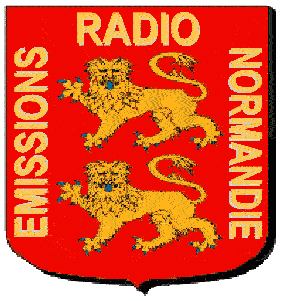
Radio Normandie
|
Au bout de 20 mois, le titre “Radio Fécamp” disparaît
et se transforme en “Radio Normandie” le samedi 7 juillet 1928
After 20 months, the title “Radio Fécamp” disappears
and is transformed in “Radio Normandie” on Saturday July 7, 1928
|

M. Fernand Le Grand - directeur-fondateur de Radio Normandie / founding director of Radio Normandie
(né le 2.11.1895 à Fécamp - décédé le 6.10.1953 à l'âge de 57 ans - à Fécamp)
(born 2.11.1895 in Fécamp - died 6.10.1953 at the age of 57 - in Fécamp)
Radio Normandie est typique des stations de radio françaises des années 1920, car elle a été fondée par un amateur passionné de radiodiffusion qui souhaitait partager son enthousiasme avec d'autres. Fernand Le Grand était un cadre de la Société Bénédictine, l'entreprise qui fabrique la célèbre liqueur.
Alors qu'il étudiait pour obtenir son diplôme de droit à Paris, M. Le Grand s'était intéressé aux expériences d'Edouard Branly sur la transmission électromagnétique. Il a mené ses propres expériences depuis sa maison de Fécamp, en Normandie, au début des années 1920, a fondé le Radio Club de Fécamp en 1924 et a consacré une grande partie de son temps et de sa fortune au développement d'une station à part entière au cours des années suivantes.
Le vieux rêve d'adolescent de Fernand Le Grand, comme il le révèlera en 1934, c'était de réaliser une véritable station de radio de dimension nationale. | Radio Normandie is typical of French radio stations of the 1920s, as it was founded by a passionate amateur broadcaster who wanted to share his enthusiasm with others. Fernand Le Grand was an executive at the Société Bénédictine, the company that made the famous liqueur.
While studying for his law degree in Paris, Mr. Le Grand had become interested in Edouard Branly's experiments on electromagnetic transmission. He conducted his own experiments from his home in Fécamp, Normandy, in the early 1920s, founded the Radio Club de Fécamp in 1924, and devoted much of his time and money to developing a full-fledged station over the next few years.
The old adolescent dream of Fernand Le Grand, as he revealed in 1934, it was to create a real radio station of national dimension. |
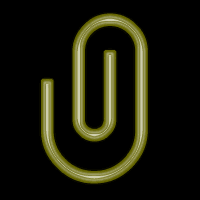 > Courte biographie de Fernand Le Grand / See annex Fernand Le Grand > Courte biographie de Fernand Le Grand / See annex Fernand Le Grand
|

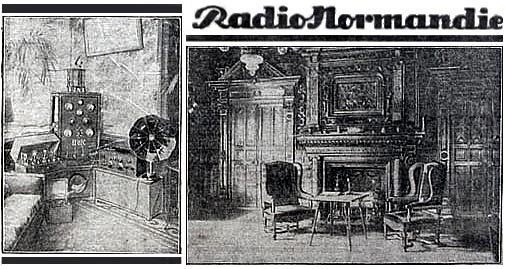
Le salon-studio de Vincelli-La-Grandière.
The living room of Vincelli-La-Grandière
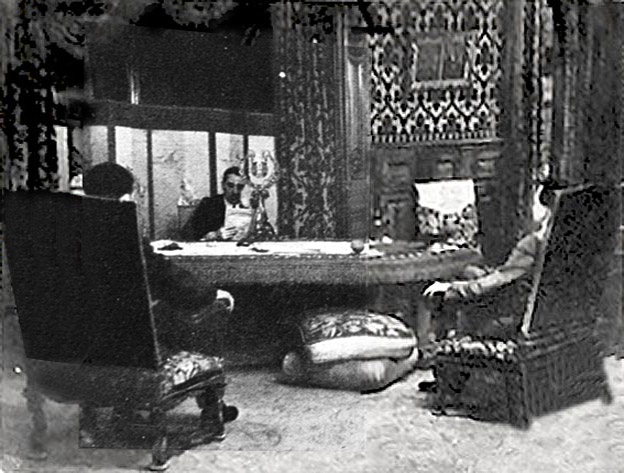
M. Le Grand assis devant le micro. Emission depuis le confortable salon. Notez la taille du micro au milieu de la table.
Une remarque, celui-ci est-il assez sensible pour recueillir les témoignages des deux invités ?
Mr. Le Grand seated in front of the microphone. Broadcast from the comfortable living room.
Note the size of the microphone in the middle of the table.
A remark, is it sensitive enough to collect the testimonies of the two guests?
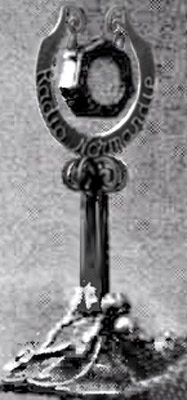
Le support de micro, en fer forgé, orné de feuilles de pommiers et de quelques pommes, symboles de la Normandie,
œuvre d'un ferronnier normand. Aucune autre radio de nos jours n'a pu se vanter de posséder un tel support de micro !
The wrought iron microphone stand, decorated with apple leaves and a few apples, symbols of Normandy,
is the work of a Norman ironworker. No other radio station today can boast such a microphone stand !
|
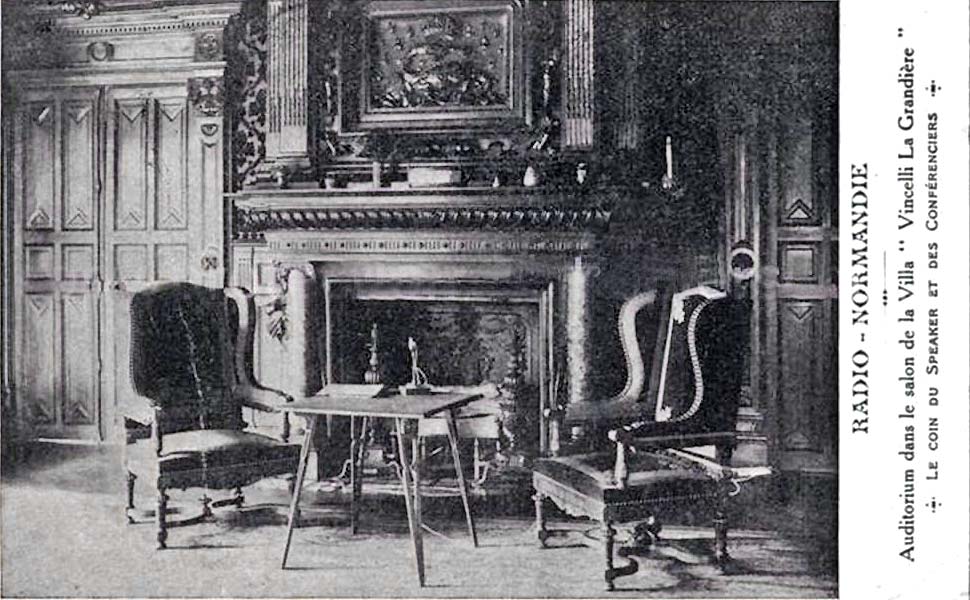
Auditorium dans le salon de Vincelli-la-Grandière - Le coin du speaker et des conférenciers
The Radio-Normandie speaker's and announcer's corner
|
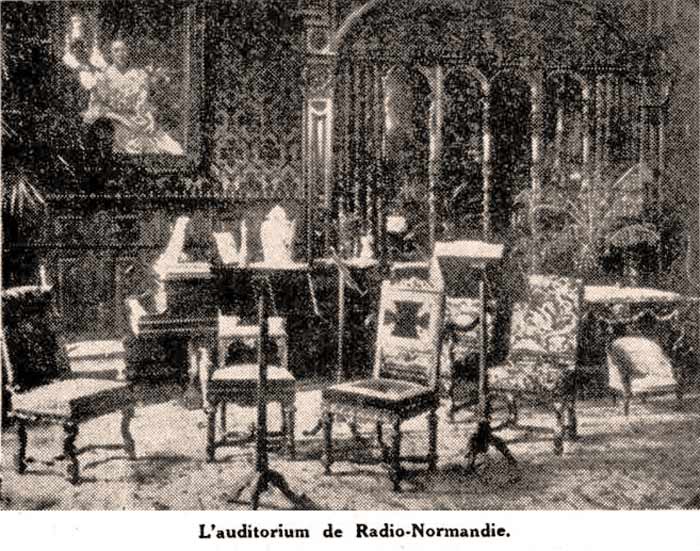
The auditorium (studio) of Radio-Normandie
|

|
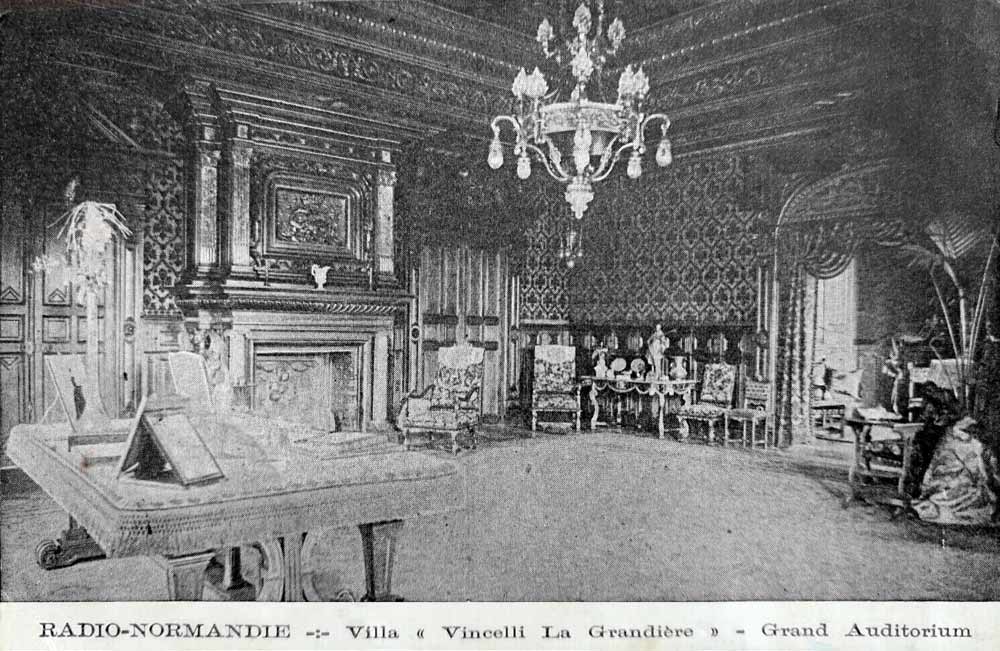
The "Great" Auditorium in "Vincelli la Grandière"
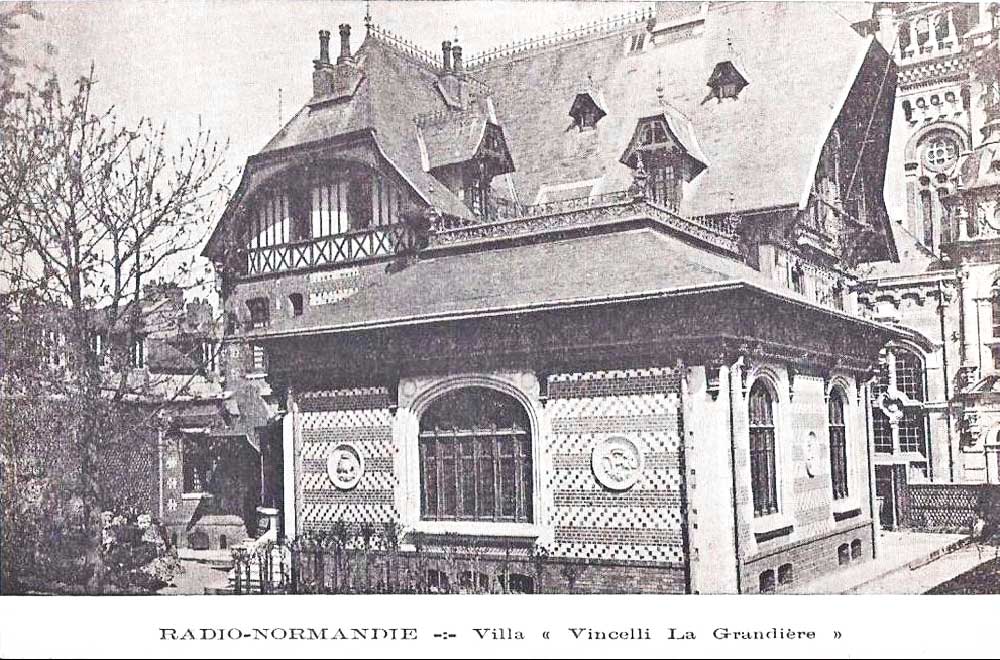
|
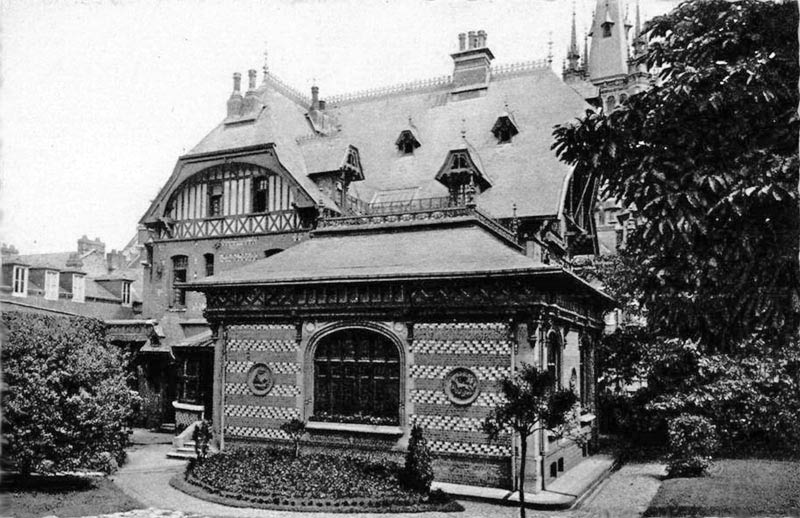
La villa Vincelli-La-Grandière, domaine particulier de M. F. Le Grand d'où partaient les premières émissions de Radio Fécamp. M. Le Grand a mis ses biens personnels à disposition de la radio, transformant son salon en auditorium et installant l'antenne sur le toit (non représentée sur la photo). Il a décidé de diffuser de la publicité au profit d'entreprises locales.
The Villa Vincelli-La-Grandière, the private estate of Mr. F. Le Grand. The first broadcasts of Radio Fécamp originated from here. Mr. Le Grand made his personal property available to the radio, transforming his living room into an auditorium and installing the antenna on the roof (not shown in the photo). He decided to broadcast advertising for the benefit of local businesses.
|
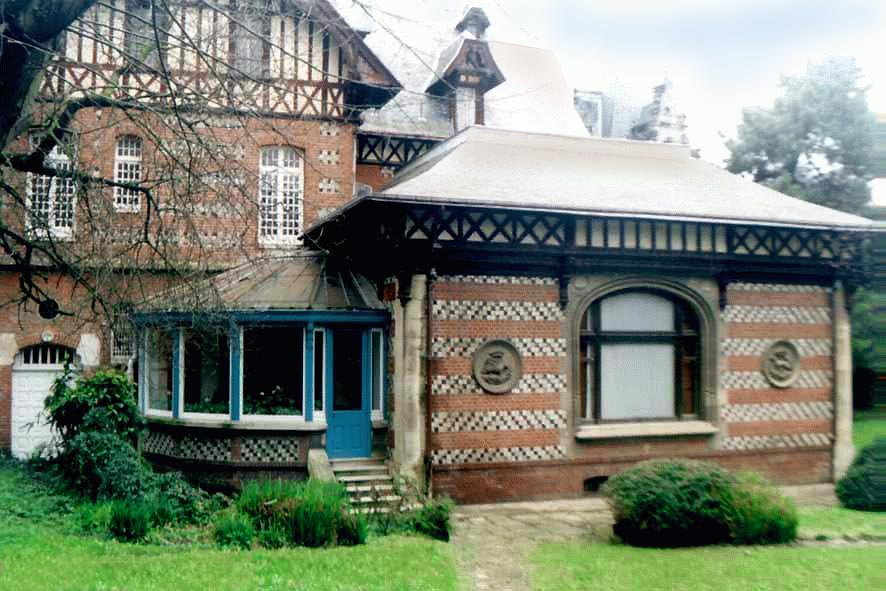
L'émetteur EF8IC était installé dans la véranda. Un grand mât de 30 mètres était monté dans le jardin de la villa, pour tendre l’antenne en nappe accrochée de l’autre côté à un mât de 5 mètres surmontant un clocheton de Vincelli-La Grandière qui a disparu de nos jours.
The EF8IC transmitter was installed in the veranda. A large 30-meter mast was mounted in the garden of the villa, to stretch the ribbon antenna attached on the other side to a 5-meter mast surmounting a bell tower of Vincelli-La Grandière which has disappeared today.
|
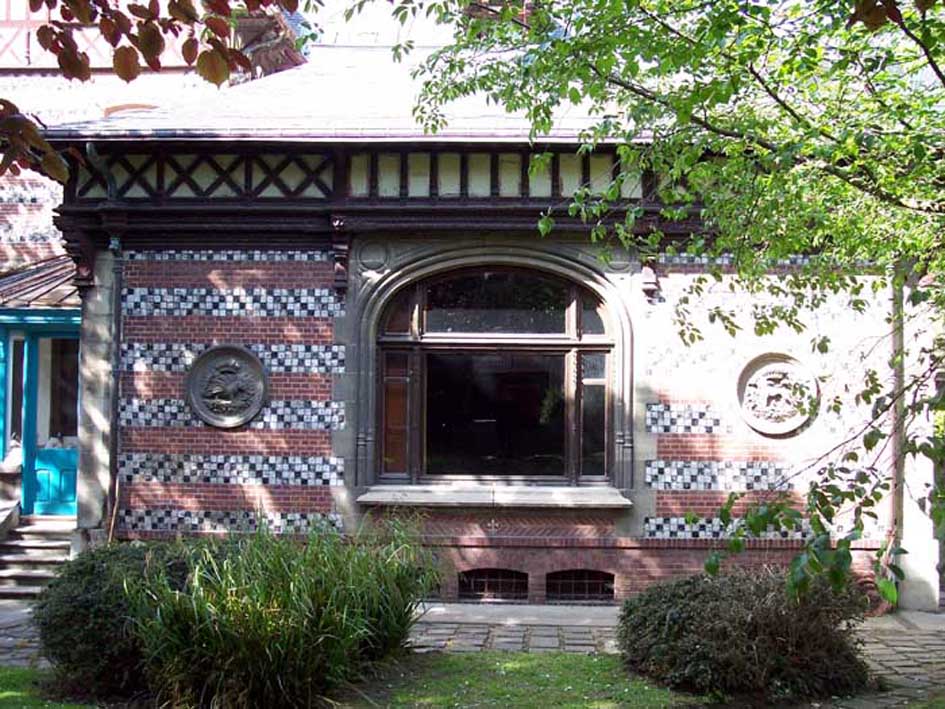
Le salon de Vincelli-La-Grandière transformé en Grand auditorium où venaient
se produire des artistes régionaux
et de petites formations musicales
Vincelli-La-Grandière's salon, now the Grand Auditorium, where regional
artists
and small musical groups to perform.
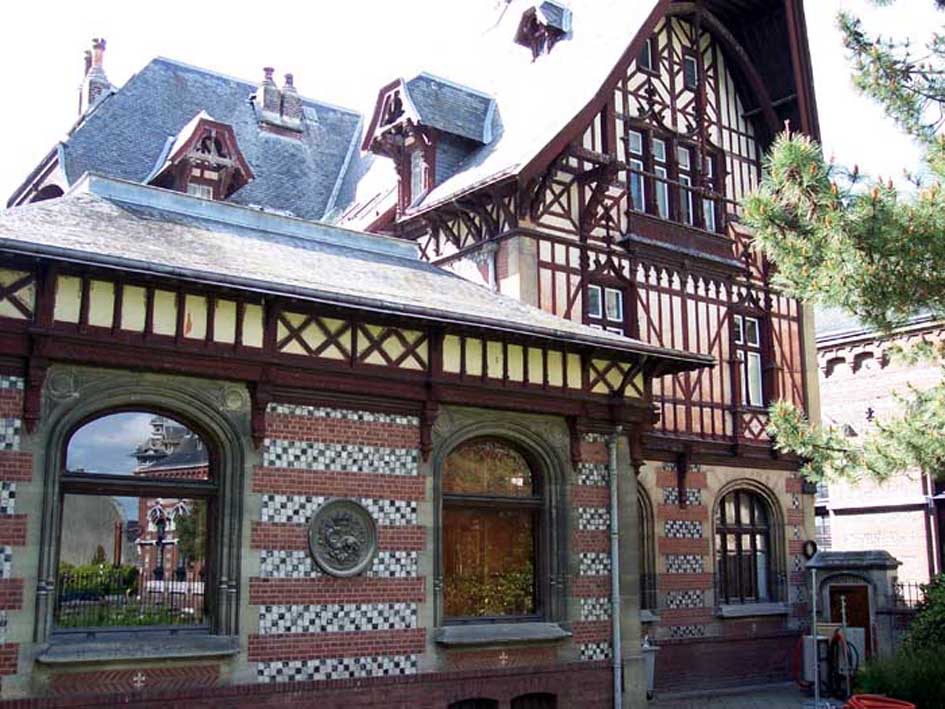
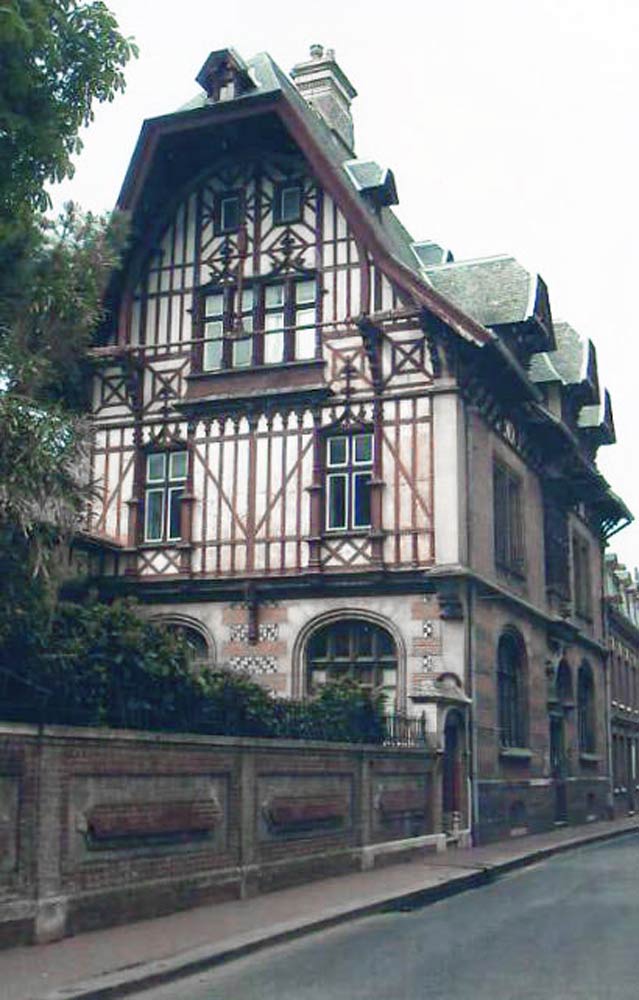
De nos jours, Vincelli-La-Grandière, côté rue Alexandre Le Grand (Vincelli-la-Grandière today)
[anct 125 rue Théagène Boufart]
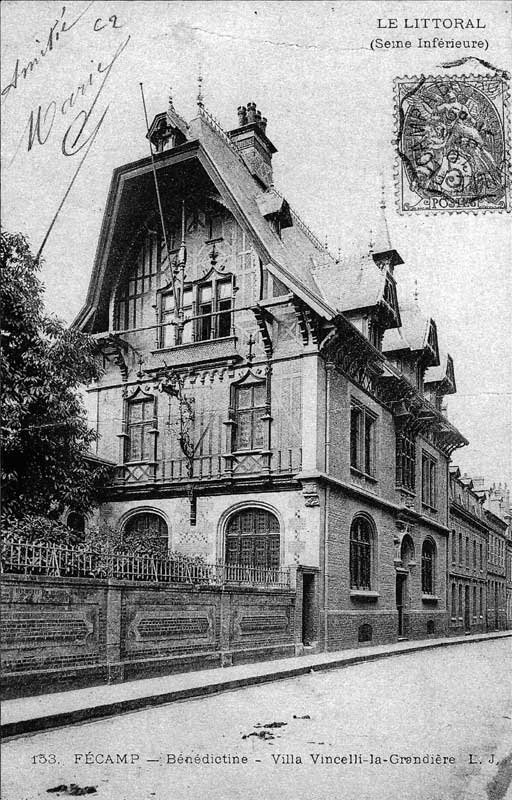
Des chevaux sont passés par là ! Horses have been there !
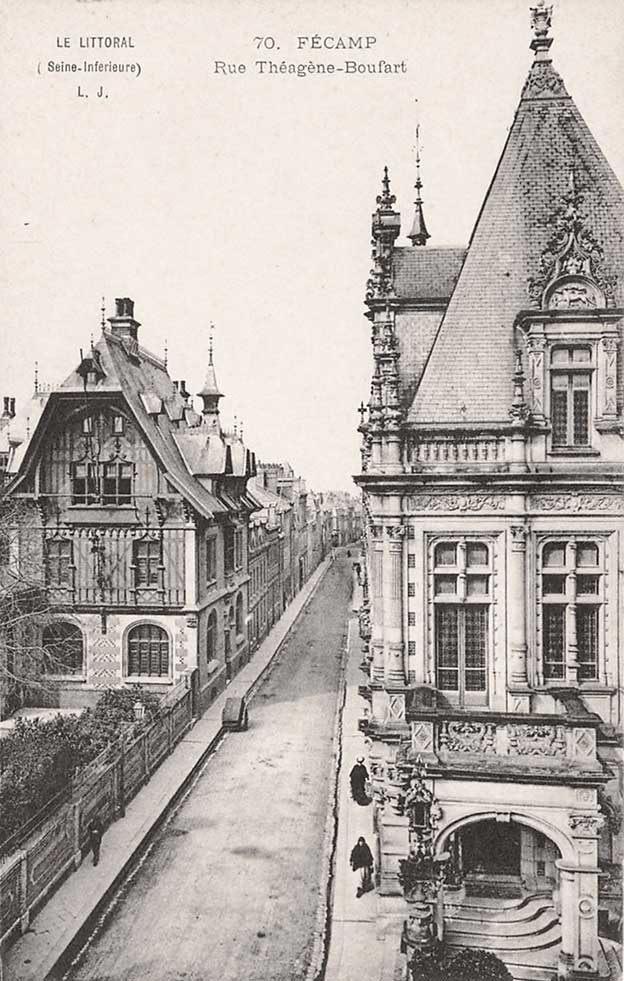
|
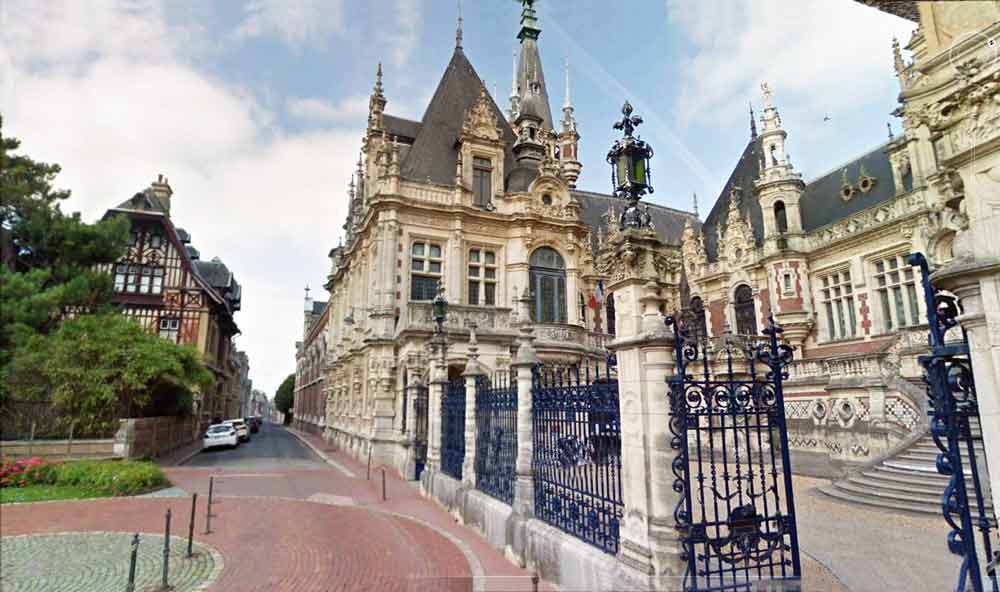
A gauche, Vincelli-La-Grandière (appelée "Villa Vincelli" aujourd'hui) et l'entrée du Palais Bénédictine à droite
On the left, Vincelli-la-Grandiere ("Villa Vincelli" today) and the entrance of the Benedictine Palace on the right
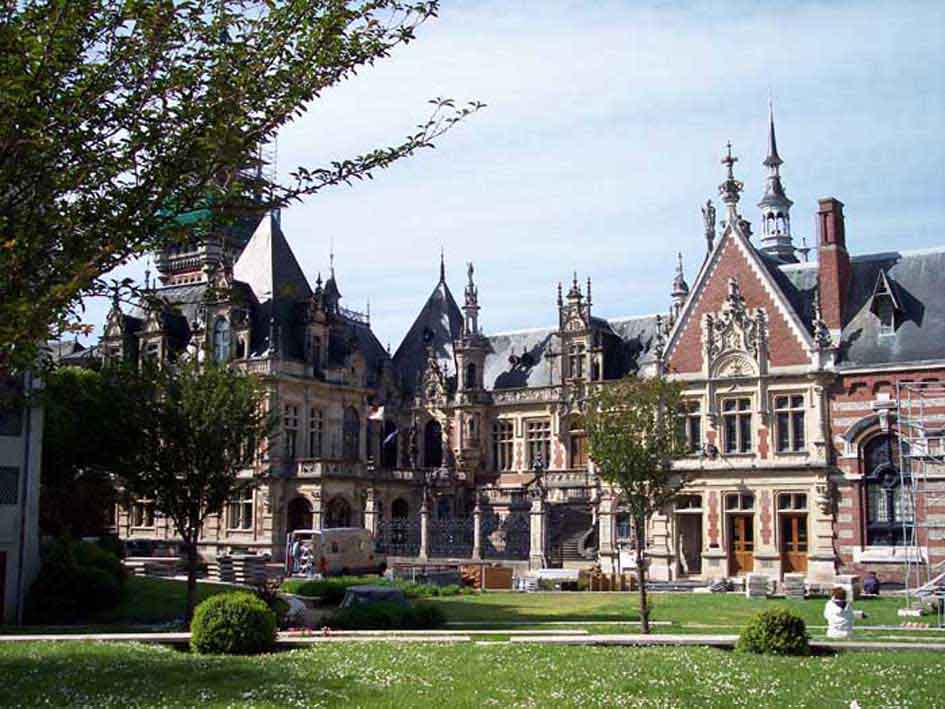
Fécamp : le Palais Bénédictine (vu de l'esplanade) - The Benedictine Palace (seen from the esplanade)
|

|
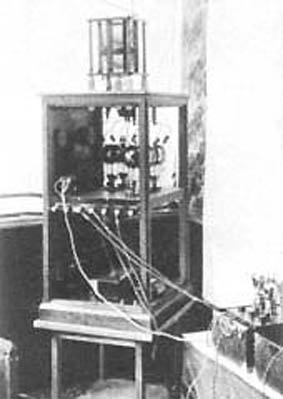 Le tout premier émetteur de 20 W Le tout premier émetteur de 20 W
"En 1926, l'émetteur 8 IC fonctionne une bonne partie de l'hiver en téléphonie avec quelques watts seulement. En télégraphie, il est entendu dans toute l'Europe et jusqu'en Amérique à Washington. Le 18/11/26, 8 IC abandonne son caractère de poste particulier et prend le nom de "Radio Fécamp". Avec les ressources du Club, venant s'ajouter aux sommes offertes par Fernand Le Grand, de nouveaux changements sont apportés et la puissance poussée à 50 watts en phonie. Les artistes régionaux prêtent très aimablement leur concours et rivalisent de talent pour donner aux émissions de Radio Fécamp un intérêt véritable. Les techniciens amateurs, parmi lesquels René Legros, vice-président et son fils Pierre, perfectionnent la modulation et en 1927, les résultats dépassent toutes les espérances, Radio Fécamp est parfaitement entendue non seulement à Fécamp et dans la région, mais au Havre et à Dieppe. Les émissions ont lieu le samedi de 20h30 à 22h (le jeudi à partir de février 1928). Les frais d'émission devenant de plus en plus lourds, le Radio Club ne peut faire face à ses dépenses avec les cotisations de ses sociétaires : un appel à la publicité est donc décidé."
(Journal de Fécamp 12/1928)
The very first 20W transmitter
"In 1926, the 8 IC transmitter operated for a good part of the winter in telephony with only a few watts. In telegraphy, it was heard throughout Europe and as far as America in Washington. On 11/18/26, 8 IC abandons its character as a particular station and takes the name of “Radio Fécamp”. With the resources of the Club, in addition to the sums offered by Fernand Le Grand, new changes are made and the power is pushed to 50 watts in speech. The regional artists lend their assistance very kindly and compete in talent to give Radio Fécamp's broadcasts a genuine interest. The amateur technicians, including René Legros, vice-president and his son Pierre, perfect the modulation and in 1927, the results exceed all expectations, Radio Fécamp is perfectly heard not only in Fécamp and the region, but in Le Havre and Dieppe. The broadcasts take place on Saturdays from 8:30 p.m. to 10 p.m. (Thursday from February 1928). The broadcasting costs becoming more and more heavy, the Radio Club cannot meet its expenses with the contributions of its members: a call for publicity is therefore decided".
(Journal de Fécamp 12/1928)
|
| |
|